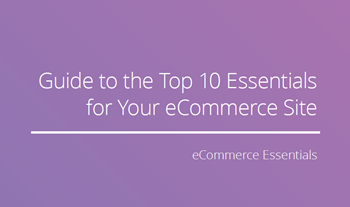Nobody operating within the digital space can afford to overlook security measures when it comes to their payment gateways. It’s estimated that hackers create 300,000 new malware on a daily basis, putting the US’ cybersecurity budget at $15 billion. So how do you ensure your systems are secure, and what strategies should you implement to secure your payment systems? Here are 10 top tips to get it right:
1. Secure online traveling information with an SSL certificate
A Secure Socket Layer (SSL) certificate is an effective method of ensuring there are no breaches as information travels between the server and the browser. Before selecting one, look at the different features offered by all the options with relation to their varying price points. Make sure all the basics are covered, as well as any desirable extras.
2. Choose a compliant processor
A processor is required in order to collect credit card payments, but choosing the right one will help you shore up your security. The most important thing to consider is whether it complies with the specifications set out by the Payment Card Industry Data Security Standards (PCI DSS). If so, go on to check its customer support provisions, vulnerability assessment credentials and refund policy in the event of fraud.
3. Restrict access
Despite the threats from outside an organization, it’s vital not to underestimate those from within. Be careful about who’s granted access to your online platform and be sure they’re only given the ability to make changes in the areas they’re responsible for. Once an individual leaves the company or no longer requires access to specific areas, restrict their account and prevent them from logging back in immediately.
4. Be alert to suspicious purchasing activity
Being aware of the patterns of activity that suggest fraud is an effective way to tackle the problem early on. It’s important to keep up to date on the latest trends and be on the lookout for them at every turn. Otherwise your website may be breached, and serious repercussions triggered before you’ve even noticed there’s an issue.
5. Implement an address verification system
Checking that the person making a transaction is the true cardholder can be done in various ways, one of which is establishing if they have the correct billing address. Flagging this up as a potential problem with the issuing bank via an address verification system will allow you to make further inquiries as to whether a stolen card is in fact being used.
6. Encrypt the data
Converting a message into encrypted text ensures hackers don’t intercept it and use it for their own gains. There are several encryption techniques you can employ, but public key encryption and symmetric key encryption are both commonly used in ecommerce and may therefore be suitable for your needs.
7. Reset default passwords
Once your ecommerce shopping cart is fully installed, it’s time to reset all the default passwords. This may sound obvious, but it’s amazing how many organizations forget to implement this important part of keeping their site secure. Reset all the passwords for each admin user to reduce fraud risk.
8. Monitor changes to core files with automated software
Employ software to monitor your site and send alerts if any changes are made to core files. This will give you a fighting chance to tackle the issue and prevent any file upload attacks occurring before it’s too late. Having the software in place will give you peace of mind and some versions are so sophisticated you can reverse the changes with just a click of a button.
9. Backup your site regularly
A hacked site means it needs to be restored and if you haven’t backed it up recently, this can take a long time. Rebuilding it over a number of hours or days will mean it’s out of action for an extended period, inconveniencing your customers and losing you money. Regularly back it up and replace the hacked version with a relatively recent one in a matter of a few clicks.
10. Ensure mobile payments are secure
With estimates suggesting that one billion people worldwide will use a mobile payment app in 2020, it’s vital to ensure mobile isn’t the weak point in your strategy. Despite many people believing mobile payments are less secure than traditional online payments, the reverse is in fact true. That’s because the app is in control of the data, not the merchant; customers have better visibility of their mobile wallet; log-in is required by third-party gateways; and the majority of mobile payment methods have strict security standards.
Access the latest business knowledge in Marketing
Get Access





Comments
Join the conversation...